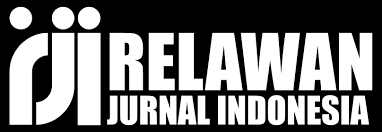Analisis Daya Saing Ekspor Karet Indonesia ke Negara Amerika Serikat dan Jepang
DOI:
https://doi.org/10.61722/jiem.v2i6.1390Keywords:
Export; RCA; EPDAbstract
Indonesia is in second place after Thailand which is one of the world's largest rubber producers. Indonesia is also the second largest rubber producing country in the world which plays an important role in meeting international market demand. The two countries that most often export rubber are the United States and Japan. Analyzing the competitiveness of Indonesian rubber exports to Japan and America is the aim of this research. Secondary data in the form of time series and cross-sectional data between individuals for the 2018–2022 period was obtained from the Trade map and BPS. This analytical method evaluates the competitive advantage of natural rubber in America and Japan using the Export Product Dynamics (EPD) and Revealed Comparative Advantage (RCA) methods to identify comparative advantages. The results of this analysis show that in 2019 and 2020, Indonesian rubber commodity exports to the US have a unique comparative advantage compared to Japan which does not have a comparative advantage. In terms of competitiveness, Indonesian rubber is relatively uncertain compared to America and Japan. Rubber producers in Indonesia and the government must be able to collaborate to improve the competitive position of Indonesian rubber exports in order to increase competitive and comparative advantages and maintain the stability of Indonesia's competitiveness against America and Japan.
References
Apriansyah, B., & Sohibien, G. P. (2019). Analisis Daya Saing Karet Alam Indonesia dan Variabel-Variabel yang Mempengaruhinya. (Vol. 7, No. 2).
Patone, C. D., Kumaat, R. J., & Mandeij, D. (2020). Analsiis Daya Saing Ekspor Sawit Indonesia ke Negara Tujuan Eskpor Tiongkok dan India. Jurnal Berkala Ilmiah Efsiensi, Volume 20 No.03.
Prasetyo, A., Marwanti, S., & Darsono. (2017). Keunggulan Komparatif dan Kinerja Ekspor Minyak Sawit Mentah Indonesia di Pasar Internasional. Jurnal Agro Ekonomi, Vol. 35 No.2.
Rakhmadina, R., Supriana, T., & Lubis, S. N. (2013). Analisis Tingkat Daya Saing Karet Indonesia. Journal of Agriculture and Agribusiness Socioeconomics.
Rochmat, I. M., Darsono, & Riptanti, E. W. (2017). Analisis Daya Saing Ekspor Komoditas Karet Alam Provinsi Jawa Tengah. Caraka Tani: Journal of Sustanaible Agriculture .
Saptana. (2008). Keunggulan Komparatif-Kompetitif dan Strategi Kemitraan. Jurnal Sosial Ekonomi Pertanian.
Syahrudin, Wahyudi, H., & Ciptawaty, U. (2022). Analisis Daya Saing Karet Alam Indonesia di Pasar Internasional. BULLET: Jurnal Disiplin Ilmu, Volume 1, No. 6 , Hal 1302-1310
Ulfah, M., Samsir, A., & Alam, S. (2022). Analisis Daya Saing Ekspor Karet Indonesia di Pasar Internasional.
Yuhendra, A. (2017). Analisis Determinan dan Daya Saing Ekspor Minyak Kelapa Sawit Indonesia di Pasar Dunia. IJAE: Indonesian Journal of Agricultural Economics.
Amir. (2004). Strategi Memasuki Pasar Ekspor Seri Bisnis Internasional. No.14.
Basri, F., & Musnandar, H. (2010). Dasar-Dasar Ekonomi Internasional Pengenalan dan Aplikasi Metode Kuantitatif. Jakarta: Prenada Media Group.
Porter. (1990). The Competitive Advantage of Nations. New York.
Badan Perencanaan dan Pembangunan Nasional. (2009). doi:https://www.bappenas.go.id/id/
Badan Pusat Statistik. (2022). Indonesia. doi:https://www.bps.go.id/id/publication/2023/11/30/8cdca0a6a45235c12ed4c4d1/statistik-karet-indonesia-2022.html
Karlinda, F. (2012). Analisis Daya Saing dan Faktor-Faktor yang Mempengaruhi Permintaan Ekspor Mutiara Indonesia. Institut Pertanian Bogor.
Syahrudin. (2023). Analisis Daya Saing Karet Alam Indonesia di Pasar Internasional. Universitas Lampung.
Budiman, A. F. (2004). The Global NR Industry: Corrent Development and Future Prospects.
Downloads
Published
Issue
Section
License
Copyright (c) 2024 JURNAL ILMIAH EKONOMI DAN MANAJEMEN

This work is licensed under a Creative Commons Attribution-ShareAlike 4.0 International License.












